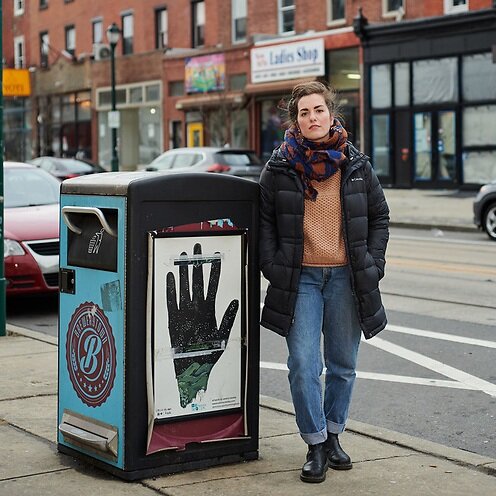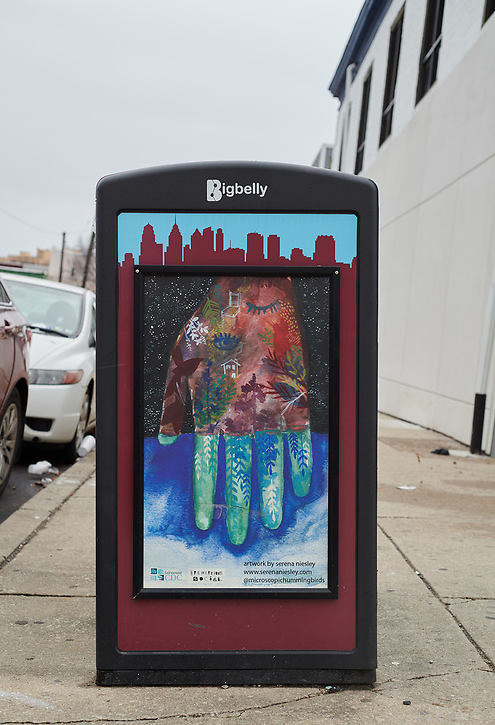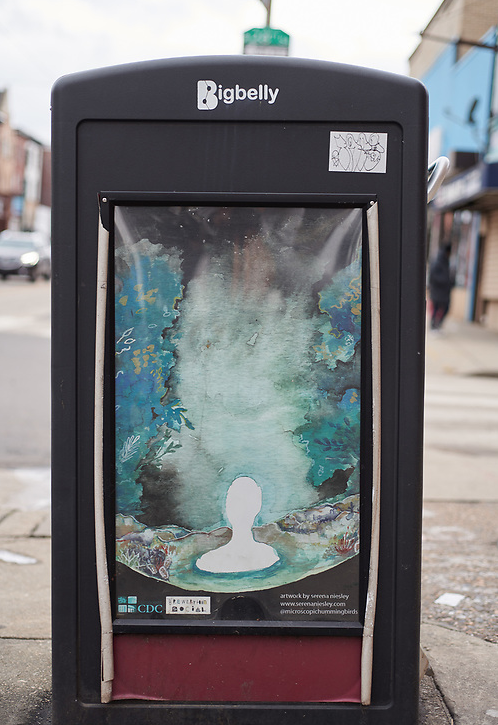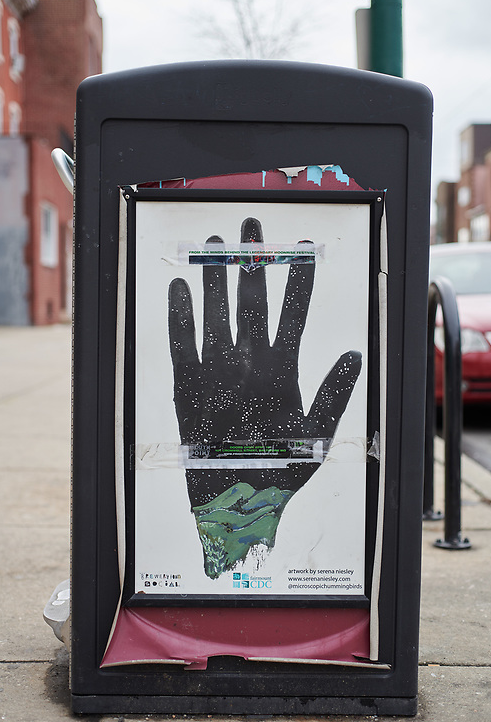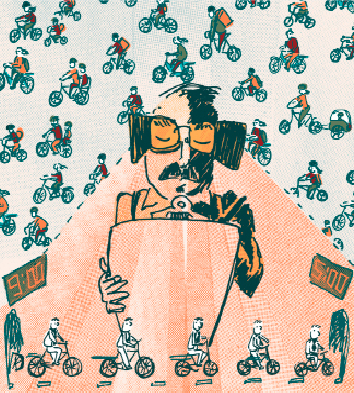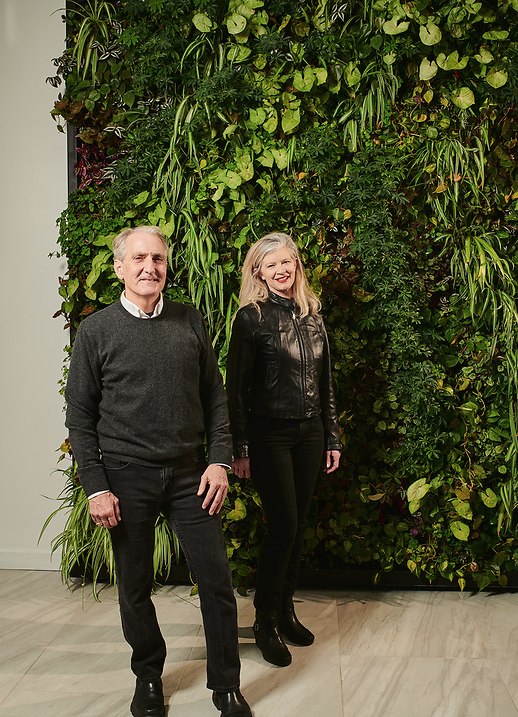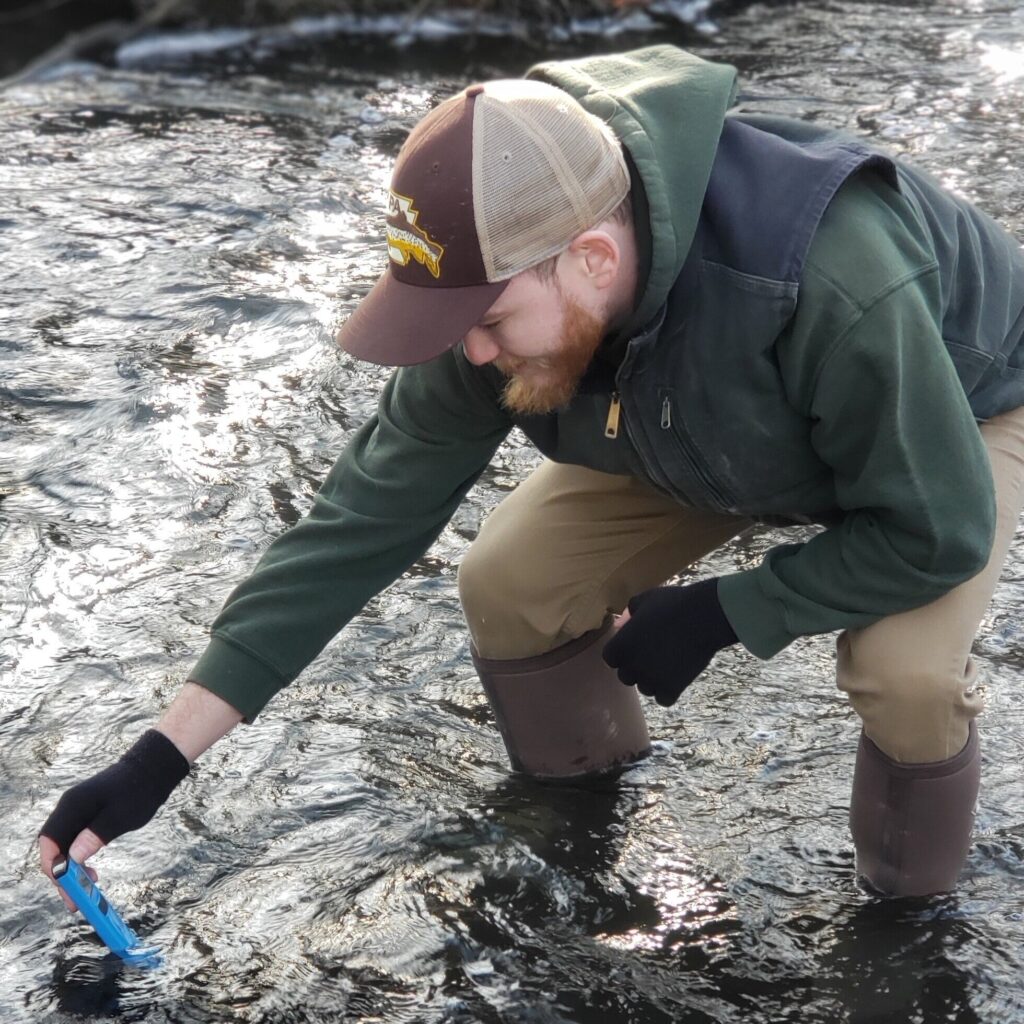Photography by Albert Yee
By Constance Garcia-Barrio
Serena Niesley recognizes a miracle, however humbly garbed, when she sees one.
In the winter of 2013, not long after graduating from Temple University’s Tyler School of Art and Architecture, Niesley, now 30, a painter, poet, designer and videographer, found herself in a slump.
“I was out of work and getting depressed,” she recalls.
When she decided to take daily walks to freshen her spirits, she kept coming across “red round things” growing on bushes in the woods in Fairmount Park and vacant lots near her Brewerytown home.
“I learned they were rose hips,” she says. “Their color lifted my heart, and their vitamin C content boosted my immune system. Nature was offering me what I needed for physical and emotional health.”
Niesley took the rose hips as a blessing and encouragement in that tough time and paid earthy homage to them.
Photography by Albert Yee
“I started weaving rose hips into wreaths,” she says. “I sold some, but mostly I gave them as gifts and decorated my home with them. I hadn’t made much art in the year after graduating from art school, but the rose hips inspired me to create again. Making the wreaths opened me back up to creating all sorts of art.”
Many plants can have a healing say in our lives, even in the city, Niesley believes.
“Sometimes, I start a walk by asking for guidance,” she says, “and it comes through as it did with the rose hips.”
Treasuring plants’ gifts may infuse Niesley’s genes.
“My family definitely had farmers in the past,” says Niesley, who grew up in Washington Boro, a village on the Susquehanna River in Lancaster County. She remembers her grandmother having a vegetable garden.
“My mother grew vegetables, too,” she says. “I remember helping with the weeding, and preserving vegetables after the harvest, cutting and freezing sweet corn, canning tomatoes and grapes. My grandma would come over to help, and the whole kitchen table would be covered with piping-hot corn on the cob, waiting to be sliced off and frozen.”
Nature wove through her childhood in another way.
“My family [and I] would go for hikes or nature walks, usually on Sundays,” Niesley says. “I learned the names of lots of birds and plants. Many of their names imprinted on me from learning them at such a young age, and I surprise myself sometimes by remembering them.”
At first glance, Philly’s Brewerytown, a beer-making powerhouse in the 19th century, founded by German immigrant Otto C. Wolf, seems an unlikely spot for Niesley to have landed after college. However, her Lancaster County heritage has flourished in this fast-gentrifying neighborhood.
Niesley’s art includes wedding certificates, birth certificates and house blessings in Fraktur, a decorative art style and calligraphy brought to Lancaster County by the Amish and Mennonites who began settling there in the 1720s, drawn by William Penn’s Holy Experiment.
“I took classes under Emily Smucker-Beidler at the Lancaster Mennonite Historical Society,” Niesley says. “My work was already folk-influenced, and I wanted to both deepen that element and connect with my roots by learning Fraktur. I was inspired by how community-focused an artform it is. Often, artists didn’t even sign their work because the family or community milestone was the important part, not the identity of the artist.”
Photography by Albert Yee
In 2017, Niesley embraced Brewerytown’s tradition by designing two bottle labels for Crime & Punishment Brewing Co.’s first bottle release.
“The two beers, Raskolnikov and Sofya, were named after characters from Dostoevsky’s famous novel, whose title also gave the brewpub its name,” Niesley says. “I researched Russian folk art styles for inspiration for the labels.”
Niesley further declared her presence and passion about plants using the last thing one might expect: public trash cans. Her exuberant flowers and spills of dark berries may have led the Fairmount Community Development Corporation to choose her images to adorn trash cans on Girard Avenue between 26th and 31st streets, a stretch with little greenery.
“In 2016, the CDC invited artists to submit designs,” Niesley says. “The project was really exciting.”
Many of her paintings were of people in nature, or flowers and plants.
“I tried to choose images that were inspiring but relatable. I don’t pretend that seeing snowdrops or pinecones, in painting or in nature, can resolve your life issues, but I don’t discount a spiritual connection, the possibility that images on one of my trash cans on the street can give someone just the right lift at the right time,” Niesley says.
“I’m deeply interested in humans and nature and the connection between the two, and the mystery that plays a part in how they commune,” she adds.
The idea of art on the street, accessible to everyone, also enthused Niesley.
“I like that you can’t help but see it,” she says. “A friend of mine said, ‘I went to throw out dog poop, and there was one of your designs [on the trash can].’”
Photography by Albert Yee
Hewing to her belief in widely accessible art, Niesley favors printmaking.
“I’ve sold paintings, but I’ve decided to emphasize prints because I can make more of them and sell them at affordable prices,” she says. “I want to get my art into people’s lives and houses.”
Eager to nudge a wider audience toward an awareness of nature and its constant renewal, Niesley made a calendar entitled “What to Look For.”
The abundant flowers, seeds, bugs and berries are “meant to be a way to remind you, simply, to slow down and look—at the trees, at the plants growing up in the sidewalk, at the wispy seeds riding on the air.” The calendar includes plant identification and an interactive map. You can find it at serenaniesley.com/calendar.
In the future, Niesley may return to school for tools to use the alchemy of art and nature to work toward human wholeness. “I may eventually study psychological counseling,” she says, “to seek a way to braid nature, art and conversation into deeper healing. That’s a pipedream, but meanwhile, I’ll continue to seek fresh ways to bring art and healing into the lives of people around me.”


